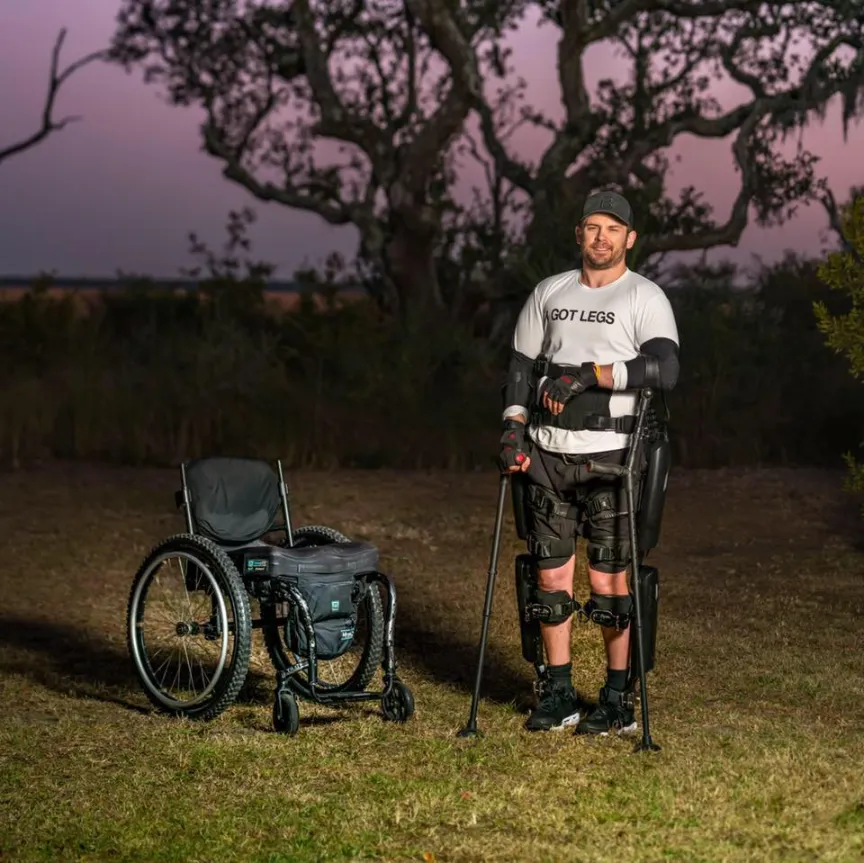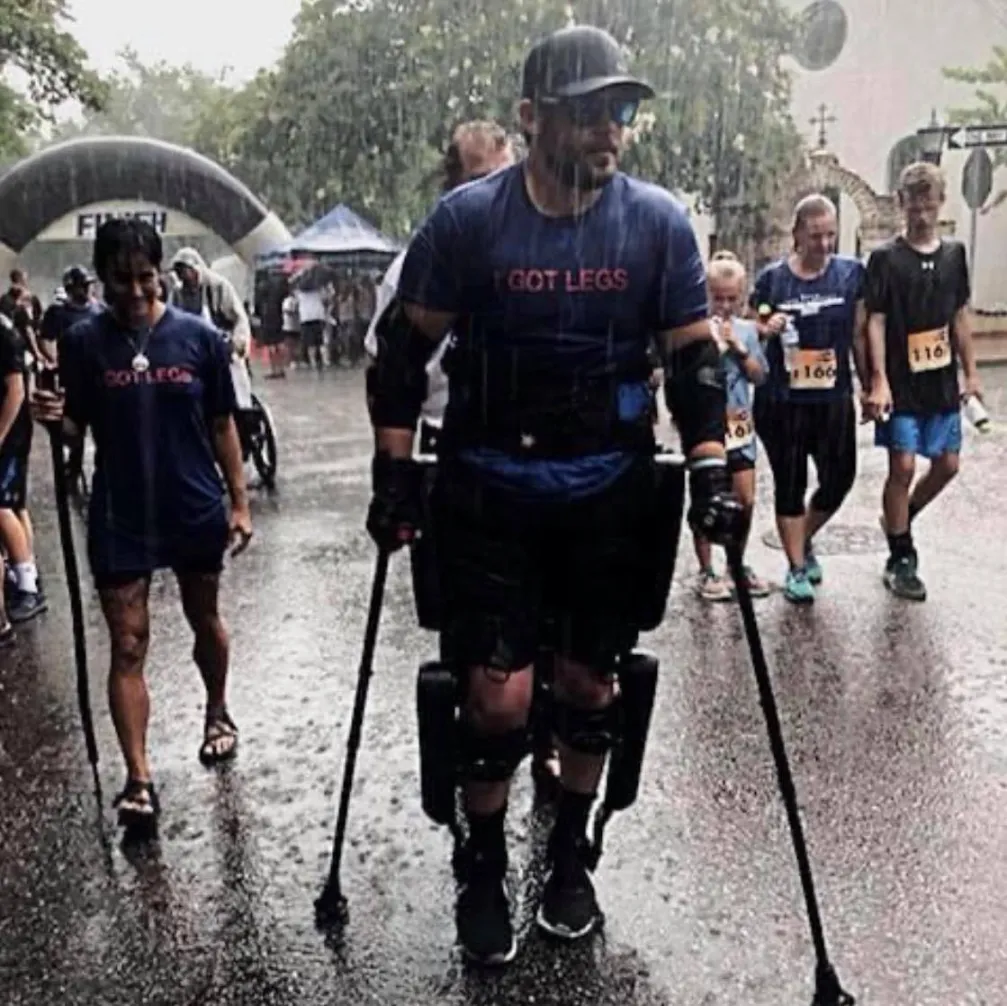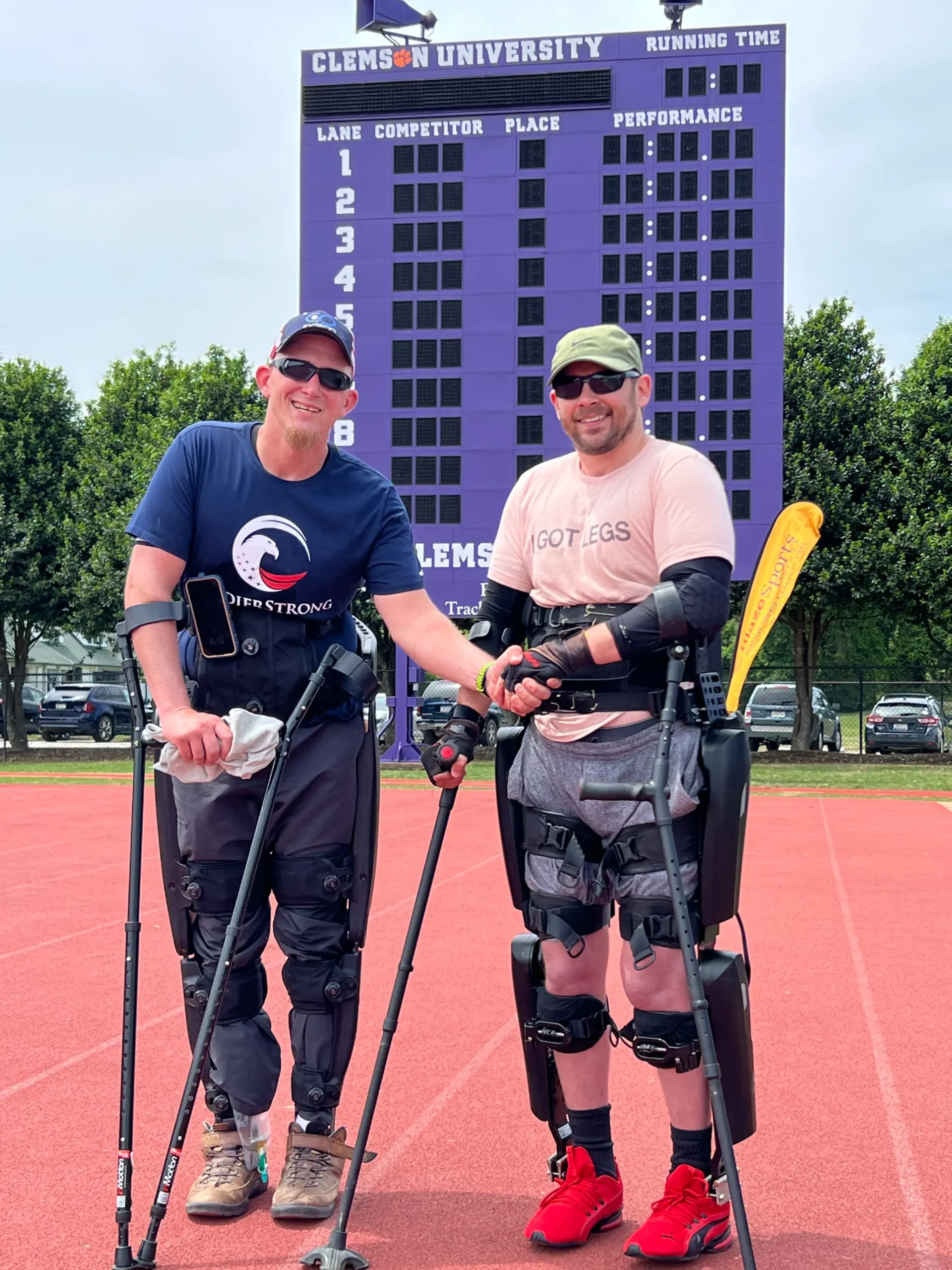What started as a slogan on fundraising t-shirts, I GOT LEGS became an official nonprofit in 2016, helping people walk again via exoskeleton technology. AfA interviewed founder Adam Gorlitsky, whose vision is to propel “science and innovation towards reversing paralysis.” He holds the Guinness World Record, Fastest Marathon Distance in a Robotic Walking Device.
AfA: Tell us about yourself?
AG: My name is Adam Gorlitsky, I am the founder of a paralysis-related nonprofit organization called I GOT LEGS. I became paralyzed, from the waist down with a spinal cord injury, from a car accident on the night of December 30, 2005.
Doctors said I would never be able to walk again. Little did I realize that I would be walking again, thanks to a ReWalk powered exoskeleton that I started using in August 2015. Since then, I have used my exoskeleton to walk in more than 60 road races and have set a couple Guinness World Records.
AfA: Tell us about winning the Guinness World Record for exoskeleton marathon walking. What has it taught you?
AG: The Guinness World Record marathon experience was incredible because it was something that I was chasing after for nearly two years. It taught me that the journey is just as rewarding as the end goal. It was a great lesson in perseverance and resilience. My Guinness World Record for Exoskeleton Marathon Walking is my proudest accomplishment to date. I also have a pending world record for the Half-Marathon that I should be able to announce soon once Guinness looks over all my evidence from that race.
AfA: What inspired you to start your company, I GOT LEGS? How does the exoskeleton technology work?
AG: I GOT LEGS is a nonprofit organization I started to help paralyzed athletes walk again by assisting them to gain access to exoskeleton technology. One of our main goals is to turn exoskeleton racing into a Paralympic sport.
I grew up playing basketball, running track and cross country, so what inspired me to start using the exoskeleton was an inherent need to regain the athleticism in the lower half of my body. Starting I GOT LEGS was, and continues to be, a way to help others do the same.
In broad terms, I describe the exoskeleton like the lower half of a Terminator suit, which I strap onto the lower half of my body. It allows me to sit, stand and walk through an internal arrangement of sensors, batteries, motors and computer software all working together as one.
The walking motion is triggered by me doing side-to-side weight shifts with my abdominals and hips when the exoskeleton is in walk mode. When the exoskeleton senses those weight shifts, it will then physically move my leg by activating a motor within the leg of the exoskeleton. It’s a perfect marriage of man and machine.
AfA: Can you share client feedback on how the product has helped them? How do you measure the impact of your exoskeleton technology?
AG: We do not manufacture or distribute the exoskeleton. We do, however, help paralyzed athletes, veterans organizations and physical therapy clinics fundraise to buy the exoskeletons. Then we create programs that empower clients to use the exoskeleton in a more recreational way. Through this process, we are working towards turning exoskeleton racing into an organized adaptive sport that will one day be in the Paralympics.
From a feedback and impact perspective, exoskeleton walking has been scientifically proven to help paraplegics improve bowel/bladder function, improve circulation and spasticity, build core strength, improve posture, maintain bone density and help improve neuropathic pain. Many others, like myself, have also reported experiencing psychological improvement with our moods, etc.
AfA: What can you tell us about companies in the exoskeleton technology industry?
AG: As I said, we do not manufacture or distribute the exoskeleton. In the U.S., the ReWalk and Indego exoskeletons are the two main ones that are FDA approved for home personal use. They are also the two main exoskeletons that we use for racing.
In terms of the sport of exoskeleton racing, the Indego is the best exoskeleton for racing distances up to 5 kilometers (3.1 miles) since it has the Advanced Gait feature that allows it to walk nearly 34% faster than the ReWalk. But the ReWalk is more durable and has a much better battery system for walking longer distances, so it’s the best exoskeleton for 10k’s, half and full marathons. The ReWalk is also currently the only exoskeleton that can climb stairs, which means we could use it for stair races.
AfA: How can the public support your business?
AG: People can donate, buy an I GOT LEGS t-shirt or learn more at our website: www.igotlegs.org. You can also visit our Facebook, Instagram and TikTok pages at: i_got_legs
AfA: How do you envision your company’s future and its role in continuing to improve the lives of people with disabilities?
AG: I envision I GOT LEGS leading the way in revolutionizing adaptive sports with exoskeleton technology and using this incredible technology to help more people within the paralysis community obtain a better quality of life.
My goal is to eventually be able to walk a marathon as fast as an able-bodied person, so I can also see us becoming more active in the research and development of a new exoskeleton, and eventually getting involved with more advanced forms of paralysis research such as neuromodulation, stem cells, etc.
AfA: What can we expect from you and the company in the next year?
AG: I will be attempting to break my Guinness World Marathon Record later this year at the Kiawah Island Marathon near my hometown of Charleston, South Carolina. I GOT LEGS is organizing an exoskeleton race in April 2024, at Clemson University. We might have a new exoskeleton prototype developed by then too.
AfA: What message would you like to share about the importance of inclusivity and the power of technology to unite people?
AG: From a physical standpoint, my spinal cord injury/disability might distinguish me from others, but it doesn’t define who I am — so my message to the world is that inclusivity and technology empower us to become the best versions of ourselves and redefine what’s possible.




